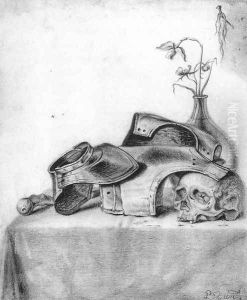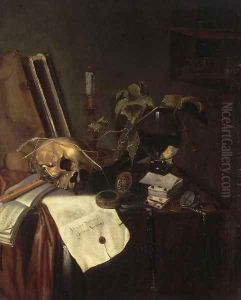Pieter Steenwijck Paintings
Pieter Steenwijck, also known as Pieter Steenwyck or Pieter Harmensz. van Steenwyck, was a Dutch Golden Age painter known for his still lifes, particularly of vanitas themes. Born around 1615 in the Netherlands, the precise details of his early life and training are not well-documented, but it is believed that he was active in the city of Leiden and possibly trained under his brother Harmen Steenwyck, who was also a notable still-life painter.
Pieter’s work is characterized by finely detailed depictions of objects that often carry symbolic meanings related to the transience of life and the futility of worldly pursuits, themes typical of vanitas paintings. These compositions frequently included skulls, extinguished candles, tipped over glasses, books, musical instruments, and other items that serve as reminders of the inevitability of death and the importance of spiritual contemplation.
Steenwijck’s paintings are noted for their meticulous attention to texture and light, capturing the reflective surfaces of glass and metal objects with a high degree of realism. Despite working in a relatively narrow genre, his skill in arranging these elements allowed him to create works with a strong visual impact and a contemplative atmosphere.
The exact date of Steenwijck's death is not known, but he is thought to have died around 1666. His work was relatively well-known during his lifetime and continued to be collected in the centuries that followed. Today, Pieter Steenwijck's paintings can be found in various museums and collections, contributing to our understanding of the vanitas genre and the cultural preoccupations of the Dutch Golden Age.

